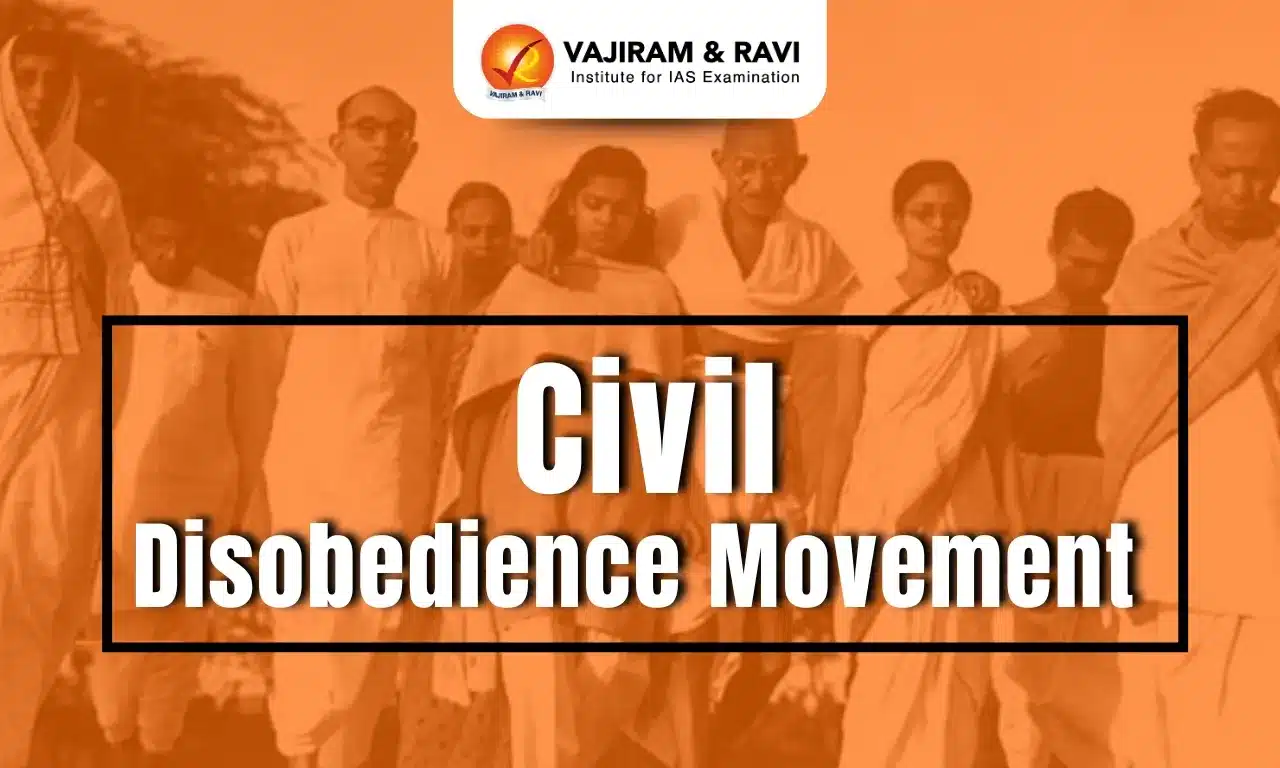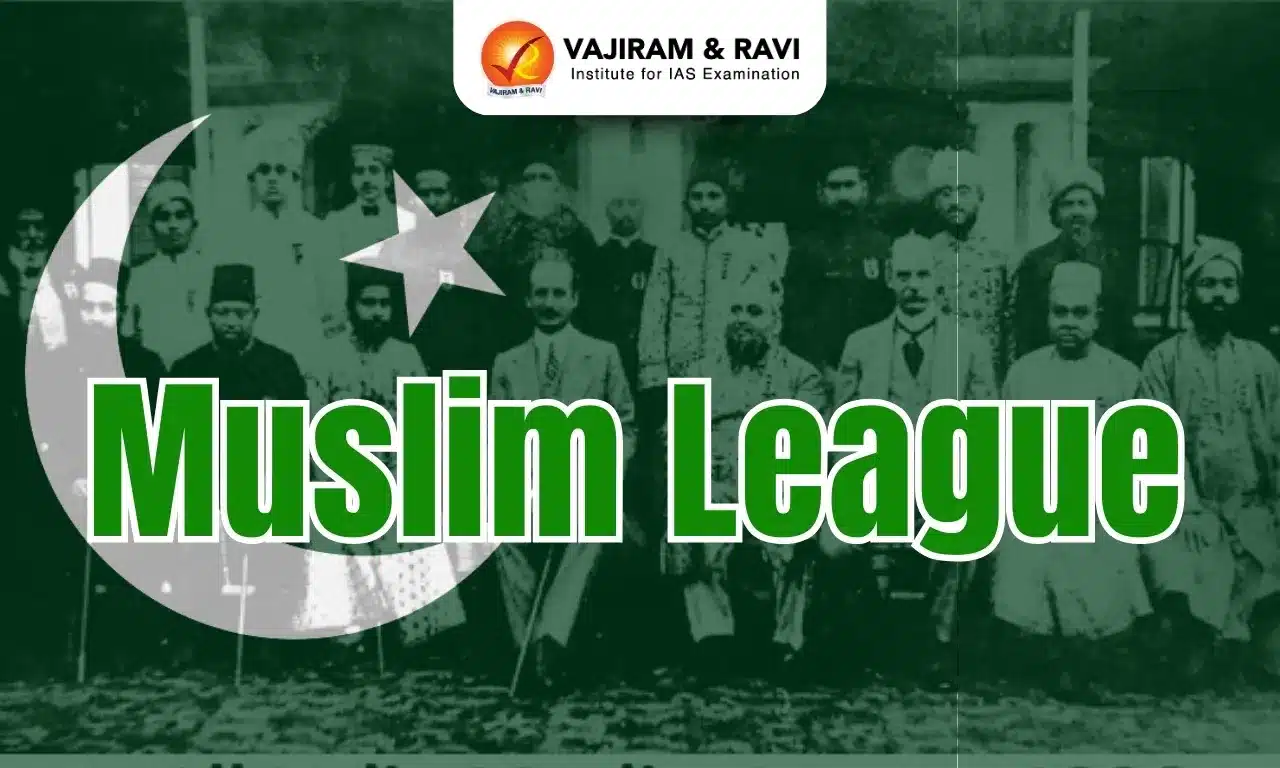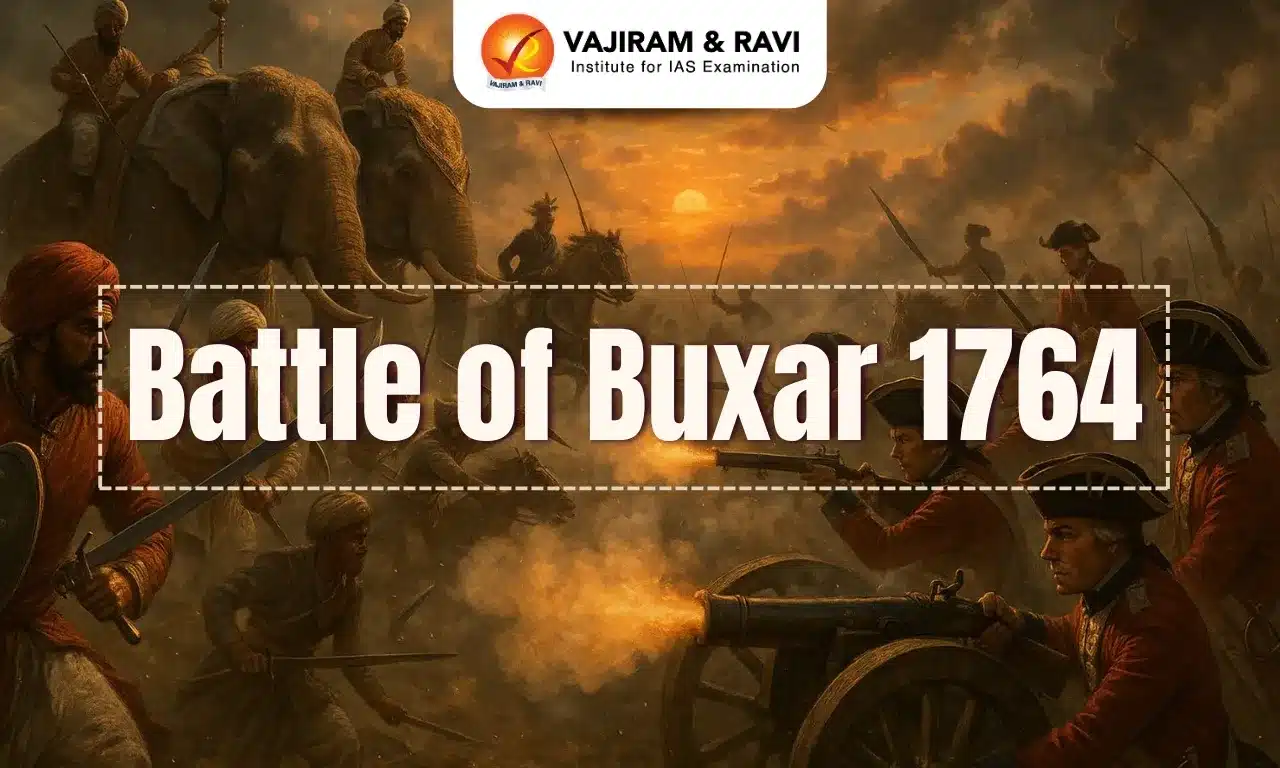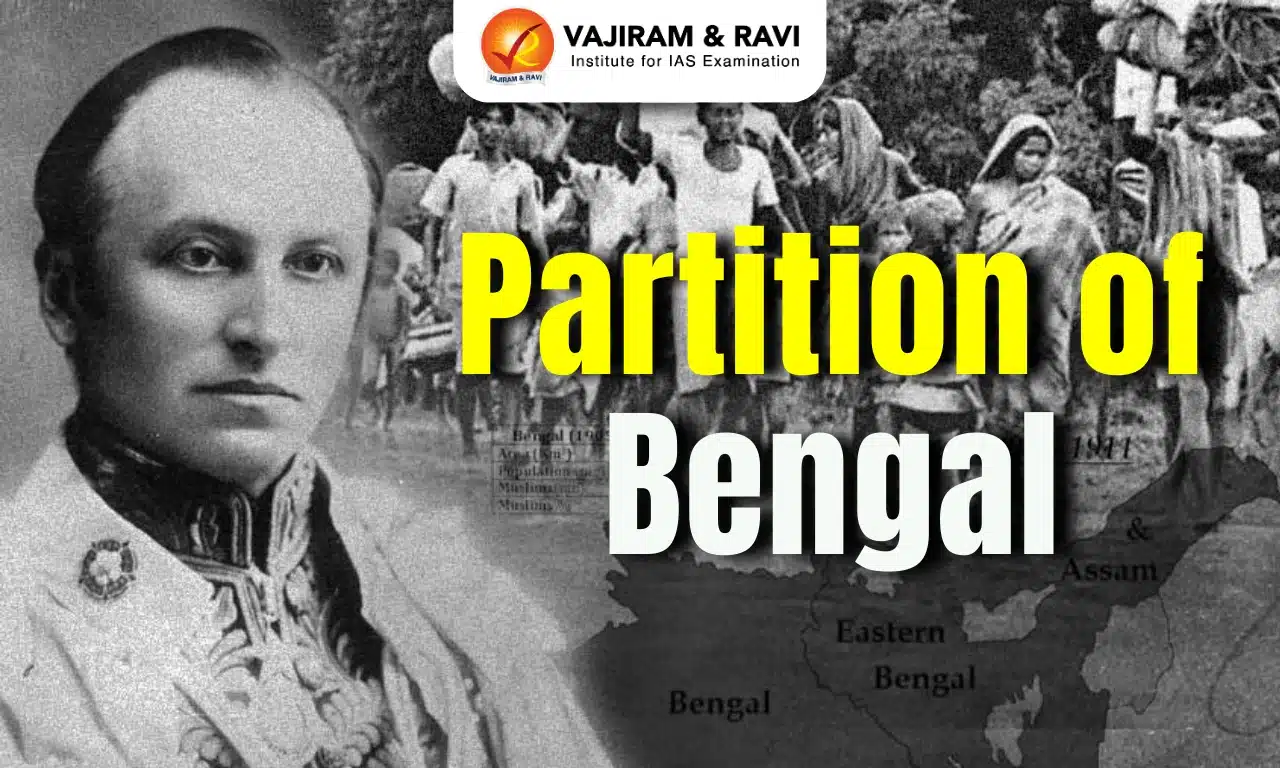Civil Disobedience Movement(1930) is regarded as the second major mass movement and a distinct advancement in widening the social reach of India's struggle for freedom after the Non-Cooperation Movement. Known also as Salt Satyagraha, it was also the first time when Congress put the objective of complete independence to the British authority as well as to the Indian masses.
The Civil Disobedience Movement was formally launched by Mahatma Gandhi on 6 April 1930 by breaking salt law after his historic Dandi March. It was followed by the widespread arrest of national leaders throughout the nation.
Background of Civil Disobedience Movement
The primary factors that contributed to the conditions for the Civil Disobedience Movement included protests against the arrest of revolutionary leaders, India's pursuit of its constitution, and a growing demand for complete independence following the rejection of Dominion status as proposed in the Nehru Report.
- Calcutta Session (1928): Endorsed the Nehru Report and demanded Dominion status. A clash between factions led to a one-year grace period for the British to grant Dominion status by December 31, 1929, or face a Civil Disobedience Movement.
- Irwin’s Declaration (October 1929): Viceroy Lord Irwin promised Dominion status and a Round Table Conference post-Simon Commission's report. The lack of a timeline frustrated Congress, leading to the Purna Swaraj resolution.
- Delhi Manifesto (November 2, 1929): National leaders outlined prerequisites for attending the Round Table Conference: immediate adoption of Dominion status, majority Congress representation, and amnesty for political prisoners.
- Lahore Session (1929) and Purna Swaraj: Irwin rejected the Delhi Manifesto's demands. Jawaharlal Nehru led the session, emphasizing Purna Swaraj. Key decisions included declaring complete independence, hoisting the tricolour on December 31, 1929, boycotting Round Table Conferences, taking the Independence Day pledge on January 26, 1930, and launching the Civil Disobedience Movement under Gandhi.
Gandhi’s Eleven Demands
Gandhi's demands were a compromise formula that appealed to a wide range of political opinions. He gave the British until January 31, 1930, to accept or reject the demands. If the demands were not met by March 11, Gandhi threatened civil disobedience.
- Reduce rupee-sterling ratio to 1s 4d
- Reduce Agricultural tax by 50% and make it a subject of legislative control
- Eliminate the government's monopoly on salt and abolish the salt tax
- Reduce military expenditure and salaries of highest-grade services
- Release all political prisoners
- Reform in the Criminal Investigation Department
- Accept Postal Reservation Bill
- Protect Indian Textiles
- Prohibition of intoxicants
- Reserve coastal shipping for Indians
- Allow popular control of the issue of firearm licences
Launch of Civil Disobedience Movement
With no response from the government regarding the 11 demands, Gandhi decided to launch the Civil Disobedience Movement. Among all the demands, he chose to violate the salt law because the British were inhumanely taxing this basic necessary item and had a near monopoly over it. It was a brilliant plan, though only a few could grasp its significance at the time of its announcement.
Dandi March
Gandhi announced the ‘Dandi March’ after informing Irwin in advance that he would break the salt laws. Gandhi and his 78 supporters started the march from Ahmedabad to the Dandi coast on March 12, 1930, and reached it on April 5, 1930. He broke the salt regulations on April 6 and, thus, officially started the Civil Disobedience Movement. After breaking the Salt Law, Mahatma Gandhi declared, “Sedition has become my religion”
- Form of protest:
- Breaking of salt laws.
- Picketing of liquor and foreign cloth shops.
- Refusing to pay taxes.
- Giving up law practice.
- Boycotting courts by refraining from litigation.
- Resignation by government servants from their posts.
- Adherence to the truth and non-violence as means to attain swaraj.
- Obedience of the local leaders after Gandhi’s arrest.
Civil Disobedience Movement Timeline
Induced by Gandhi's extraordinary endeavours at Dandi, defiance of the salt laws spread throughout the country.
| Region | Associated Leaders | Significant Activities |
| Tamil Nadu | C. Rajagopalachari |
- Break of salt law on the Tanjore coast by a march from Tiruchirapalli to Vedaranniyam (Vedaranyam Salt Satyagraha) - Picketing of foreign cloth shops - Anti-liquor campaign |
| Malabar |
K. Kelappan P. Krishna Pillai |
- Organised salt marches ( Calicut to Poyannur) |
| Bengal | Subhas Chandra Bose and J.M. Sengupta |
- Salt satyagraha, anti-chaukidari tax and anti-Union Board agitation - Collective protests and assault on officers who attempted to seize the property of those refusing to pay the chowkidari tax |
| Peshawar | Khan Abdul Gaffar Khan |
- Organisation of a volunteer brigade, ‘Khudai Khidmatgars’ (Red-Shirts) - Refusal by Garhwal Rifles soldiers to fire on an unarmed crowd |
| Dharasana | Sarojini Naidu, Imam Sahib, and Manilal | - Raid on the Dharasana Salt Works. (Gandhi was to lead the satyagraha but was already arrested.) |
| Bardoli and Kheda Region | Sardar Patel |
- No tax movement and refusal to pay land revenue - Exodus of a large number of people from British India into the neighbouring princely states |
| United Provinces | Jawaharlal Nehru |
- No-revenue campaign - No-rent campaign |
| Bihar | Ambika Kant Sinha |
- Breaking of the salt law in Patna - Salt satyagraha in Champaran and Saran - Replacement of salt satyagraha by non-payment of chowkidari tax |
| Orissa | Gopalbandhu Choudhuri | - Satyagraha in the coastal regions of Balasore, Cuttack, and Puri districts |
Truce period
Tribal and Peasant militancy, Congress leaders being in jail, and decreasing support of Rich peasants as well as Business classes in the later months of 1930 compelled Gandhi and Congress to retreat from the Movement.
Gandhi-Irwin Pact
The Gandhi-Irwin Pact was an agreement signed on March 5, 1931, between Gandhi and Lord Irwin, the then Viceroy of India. It marked the end of the Civil Disobedience Movement's first phase.
- The key provisions included the release of political prisoners, the right to make salt for personal use, and the withdrawal of ordinances against civil disobedience.
- In return, Gandhi agreed to suspend the movement and attend the Second Round Table Conference in London.
Karachi Session, 1931
The Karachi Session of the Congress held in March 1931 aimed to endorse the Gandhi-Irwin Pact. During this session, resolutions were passed endorsing the Delhi Pact, reiterating the goal of Purna Swaraj. This session marked a crucial moment aligning Congress with the agreements made under the Gandhi-Irwin Pact.
Withdrawal of Civil Disobedience Movement
The Civil Disobedience Movement was initially withdrawn in 1931 after the Gandhi-Irwin Pact. However, following the Second Round Table Conference's failure, Gandhi resumed the movement. Arrested in January 1932, he faced severe repression, including confiscation of Congress funds and occupation of buildings.
- Despite initial momentum, the movement began to decline due to intense government repression.
- By late 1932, it was tapering off but continued in some form until 1934.
- Gandhi, still in jail, suspended the movement in May 1933 and formally withdrew it in April 1934.
Civil Disobedience Movement Participation
The Civil Disobedience Movement saw diverse participation from various social groups, each contributing uniquely to the struggle against British rule. Women, peasants, students, and merchants played key roles in shaping its course.
- Urban areas: In the urban areas, the support for Gandhian ideology was less than that during the NCM.
- Only a few lawyers gave up their practice, and a few students joined ‘national schools’ instead of government-controlled institutions.
- This was due to perhaps the popularity of revolutionary nationalists (especially Bhagat Singh).
- Muslims: Muslim participation was nowhere near the NCM, and there was even communal discontent in some places.
- Merchants: There was solidarity with the nationalist movement by the Calcutta Marwaris headed by G.D. Birla.
- Business class and Merchants: Business groups showed considerable support during the initial phase that filled the gap of other sections, especially Gujarati business communities.
- Women: Women were active in picketing outside liquor stores, opium dens, and shops selling foreign clothing. It was a liberating experience for them.
- Peasants: Peasants organised numerous protests against the policies of the British Government and took part in them in large numbers.
- Tribal: During the Civil Disobedience movement, tribal people launched a nonviolent protest (or Satyagraha) against these imposed restrictions.
- Students: The Civil Disobedience Movement was heavily influenced by students and youth. They organised protests, strikes, and boycotts, and they took an active role in the Salt Satyagraha.
Civil Disobedience Movement Assessment
Despite not achieving its goals of, Purna Swaraj, the Movement occupies a special place in the history of India’s quest for freedom.
- Not a failure for Congress: Congress could mobilise great political support and got moral authority that was reflected in the massive victory in the 1937 election.
- More radical forms of Congress:
- The resolution of Purna Swaraj and its attributes, declared in the Karachi Resolution, shows the drifting of Congress towards greater radicalisation. Examples: Fundamental Rights, Socialist Economic Policy, abolishing Zamindari, etc.
- Further, a separate party, but overall supervision of Congress, called the Congress Socialist Party, was founded in 1934. It was founded by ideologically fabian socialists Jai Prakash Narayan, Acharya Narendra Deva and Ram Manohar Lohia.
- Equal treatment to Indians: Although many Congress supporters were considerably disappointed, especially the youth and peasants whose lands were not restored, they were also jubilant that Indians were treated for the first time as equals in signing the pact and holding the RTCs.
Civil Disobedience Movement UPSC PYQs
Q1: “Sedition has become my religion" was the famous statement given by Gandhiji at the time of (UPSC Prelims 2025)
a) the Champaran Satyagraha
b) publicly violating Salt Law at Dandi
c) attending the Second Round Table Conference in London
d) the launch of the Quit India Movement
Ans: (b)
| Other Related Posts |
|
| Round Table Conference | Gandhi-Irwin Pact |
| Poona Pact 1932 | 1937 Elections in India |
Last updated on November, 2025
→ Check out the latest UPSC Syllabus 2026 here.
→ Join Vajiram & Ravi’s Interview Guidance Programme for expert help to crack your final UPSC stage.
→ UPSC Mains Result 2025 is now out.
→ UPSC Notification 2026 is scheduled to be released on January 14, 2026.
→ UPSC Calendar 2026 is released on 15th May, 2025.
→ The UPSC Vacancy 2025 were released 1129, out of which 979 were for UPSC CSE and remaining 150 are for UPSC IFoS.
→ UPSC Prelims 2026 will be conducted on 24th May, 2026 & UPSC Mains 2026 will be conducted on 21st August 2026.
→ The UPSC Selection Process is of 3 stages-Prelims, Mains and Interview.
→ UPSC Result 2024 is released with latest UPSC Marksheet 2024. Check Now!
→ UPSC Prelims Result 2025 is out now for the CSE held on 25 May 2025.
→ UPSC Toppers List 2024 is released now. Shakti Dubey is UPSC AIR 1 2024 Topper.
→ UPSC Prelims Question Paper 2025 and Unofficial Prelims Answer Key 2025 are available now.
→ UPSC Mains Question Paper 2025 is out for Essay, GS 1, 2, 3 & GS 4.
→ UPSC Mains Indian Language Question Paper 2025 is now out.
→ UPSC Mains Optional Question Paper 2025 is now out.
→ Also check Best IAS Coaching in Delhi

















